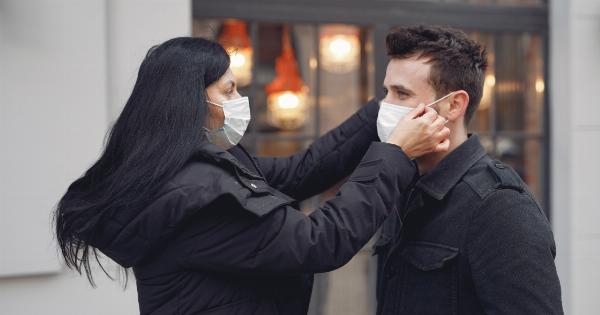When it comes to sexual health, it’s crucial to be aware of the potential risks associated with engaging in both committed and casual relationships.
Sexually transmitted diseases (STDs) are a common concern, and understanding how the level of risk varies between these two types of relationships can help individuals make informed decisions about their sexual health and take appropriate precautions. In this article, we’ll delve into the topic of STD risk in committed versus casual relationships, exploring the factors that contribute to these differences and providing guidance on how to protect oneself in both scenarios.
1. Defining Committed and Casual Relationships
Before delving into the differences in STD risk, it’s essential to understand what we mean by committed and casual relationships.
A committed relationship typically involves two individuals who have made a mutual commitment to each other, often in the form of a monogamous partnership.
In this type of relationship, the couple shares a deep emotional connection, and they are exclusively sexually involved with each other.
In contrast, casual relationships are characterized by a lack of commitment and exclusivity. Partners in a casual relationship may engage in sexual activity without the expectation of a long-term commitment or emotional attachment.
This can include friends with benefits, one-night stands, or non-monogamous relationships.
2. Understanding STD Transmission and Risk Factors
STDs are pathogens that are primarily transmitted through sexual contact, including vaginal, anal, and oral sex. Some of the most common STDs include chlamydia, gonorrhea, syphilis, herpes, and human papillomavirus (HPV).
The risk of contracting an STD depends on several factors:.
3. Consistency of Partner
In committed relationships, where both partners are exclusively sexually involved with each other and have been tested for STDs before engaging in sexual activity, the risk of transmitting STDs is generally lower.
However, it’s essential to note that if either partner has had previous unprotected sexual encounters or have not been tested recently, there is still a risk of STD transmission within the relationship.
Casual relationships, on the other hand, present a higher risk of STD transmission due to the potential involvement of multiple partners. The more partners an individual engages with, the higher their risk of encountering someone with an STD.
4. Communication and Knowledge
Communication is key when it comes to managing STD risk. In committed relationships, partners can openly discuss their sexual history and any potential exposure to STDs.
This shared knowledge allows them to make informed decisions about their sexual health together, including getting tested regularly and using appropriate protection to prevent transmission.
In casual relationships, the level of communication and knowledge about each partner’s sexual health can be more challenging to establish.
Often, individuals engage in sexual activity without investing the time and effort necessary to have these important conversations. This lack of communication can significantly increase the risk of STD transmission.
5. Condom Usage
Consistent and correct condom usage is one of the most effective ways to reduce the risk of STD transmission.
In committed relationships where both partners have been tested and are monogamous, condom usage may be less common compared to casual relationships.
In casual relationships, where individuals may have multiple partners, condom usage becomes a crucial component of protection against STDs.
However, it’s important to note that condoms are not 100% foolproof, and some STDs can still be transmitted through skin-to-skin contact or oral sex, even with condom use.
6. Regular Testing and Treatment
Regular testing is essential for both committed and casual relationships. In committed relationships, partners may opt for testing before becoming sexually active to ensure they are both starting on a clean slate.
Regular testing can help identify any potential infections early on and avoid any unknowing transmission within the relationship.
In casual relationships, where individuals may have multiple partners, regular and routine testing becomes even more critical.
Because the risk of encountering someone with an STD is higher, routine testing every few months is recommended to ensure early detection and timely treatment if necessary.
7. Vaccine Availability
For certain STDs, vaccines are available to provide protection.
For example, the HPV vaccine is a highly effective means of preventing the most common strains of the virus, which can lead to various cancers and genital warts.
The HPV vaccine is recommended for both males and females before becoming sexually active, as it provides optimal protection when administered before exposure to the virus.
8. Importance of Mutual Trust and Honesty
In both committed and casual relationships, mutual trust and honesty play a significant role in managing STD risk. In committed relationships, partners rely on each other’s honesty about potential exposures and testing history.
In casual relationships, establishing trust can be more challenging, as partners may not know each other well enough to trust their word completely.
In such scenarios, it becomes even more crucial to openly communicate and ensure both partners are on the same page regarding sexual health and protection.
9. Seeking Professional Help and Guidance
Regardless of the type of relationship, seeking professional help and guidance can greatly contribute to managing STD risk effectively.
Partners in committed relationships can consult healthcare providers to discuss their sexual health needs, get tested, and receive appropriate counseling on safe sex practices.
In casual relationships, seeking professional help becomes even more critical, as individuals may engage in riskier sexual behaviors due to the nature of their relationships.
Healthcare providers can provide education, resources, and guidance on protecting oneself and others from STD transmission.
10. Conclusion
Understanding the differences in STD risk between committed and casual relationships is crucial for individuals looking to safeguard their sexual health.
While committed relationships generally present a lower risk of STD transmission, it’s essential to maintain open communication, get tested regularly, and consider safer sex practices to ensure ongoing protection.
In casual relationships, where the risk of encountering someone with an STD is higher, it becomes even more vital to have open and honest conversations, use protection consistently, and get tested routinely to detect and treat any potential infections promptly.
By being proactive, responsible, and informed, individuals can reduce their chances of contracting and spreading STDs, regardless of the type of relationship they are in.




























